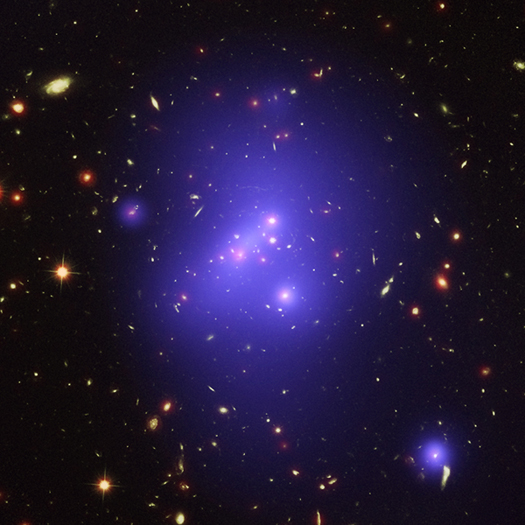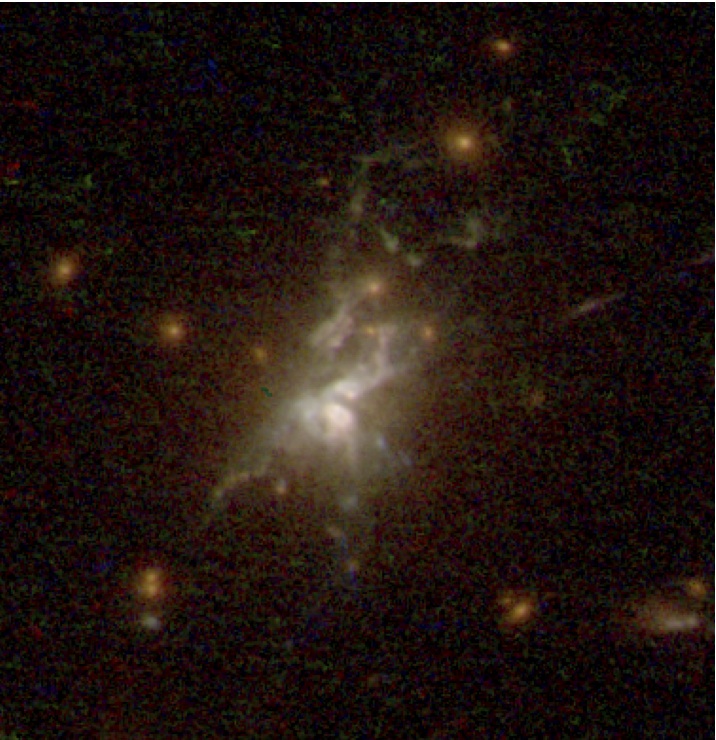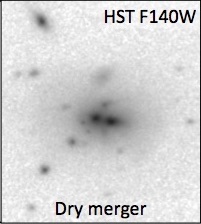Michael McDonald
Asst. Professor @ MIT
Contact Info
Office:
MIT Kavli Institute
Room 37-664B
70 Vassar Street
Cambridge, MA 02139
Phone:
(617) 324-1075
Email:
mcdonald "at" mit.edu
Refereed Publications (ADS) (arXiv)
 The massive galaxy clusters IDCS J1426.5+3508, which, at z=1.75, is amonst the most distant clusters known. This system has a rich ICM and a well developed population of galaxies. Systems such as this probably collapsed and virialized at z ~ 3, an epoch that will soon be reachable with the SPT-3G survey. |
The First Galaxy Clusters
The study of the most distant, high redshift clusters has recently exploded with the success of mm-wave surveys which detect galaxies via the Sunyaev Zel'dovich effect. In particular, the South Pole Telescope has discovered hundreds of new clusters out to a redshift of 1.85, or 10 billion years in the past. These newly-discovered systems are providing our first glimpse of galaxy clusters shortly after they collapsed out of the cosmic web. Future surveys, such as SPT-3G, will find thousands of new galaxy clusters, including the first virialized systems at z > 2.
|
|
 Three-color broadband image of the central galaxy in the Phoenix cluster. This galaxy is experiencing a massive ~800 Msun/yr starburst, which is most likely being fueled by rapid cooling of the intracluster medium. This may be a short-lived phase of evolution that central galaxies in the most massive clusters go through. Our recent work suggests that the highest mass clusters may go through phases of inefficient feedback, as their AGN transition between radio and quasar mode. |
AGN Feedback and Cooling Flows
One of the great mysteries in astronomy today is why >90% of the baryons in the Universe are locked up in hot, diffuse gas with short cooling times. This problem manifests as a serious disagreement between the predicted luminosity function and the observed one - there are simply not enough stars being formed in the most massive and least massive galaxies. At the low-mass end, this problem is known as the "missing satellite problem", while at the high-mass end it is known as the "cooling flow problem".
|
|

Hubble Space Telescope image of the central galaxy in a massive galaxy cluster at z > 1. This central galaxy, which was unresolved in ground-based images, appears to be in the late stage of a dry merger. Our latest results suggest that these central, massive galaxies were growing rapidly via both wet and dry mergers at early times. |
The Growth of Giant Elliptical Galaxies
The central galaxies in clusters occupy a special place and, as such, experience a different evolution than the rest of the cluster members. These systems are thought to grow primarily via dry (gas-poor) mergers alongside the rest of the cluster, leading to a relationship between the central galaxy mass and the total cluster mass.
|